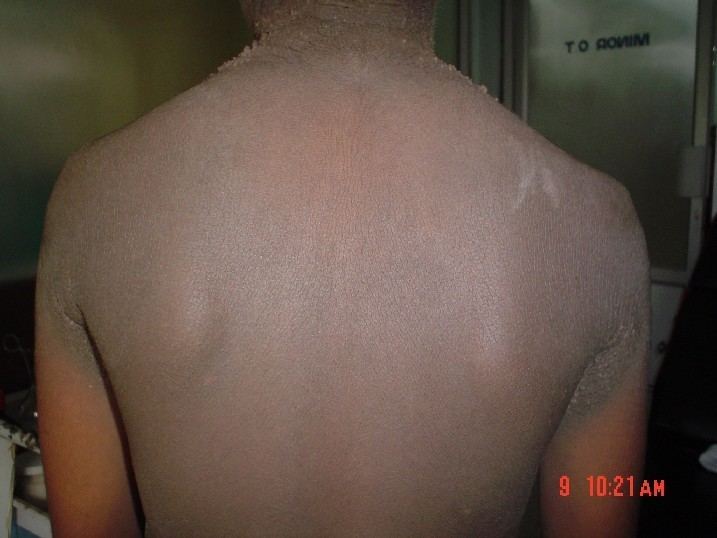ICD-9-CM 709.0 MeSH D017495 | ICD-10 L81.0-L81.4 DiseasesDB 24638 | |
 | ||
Causes
Hyperpigmentation can be caused by sun damage, inflammation, or other skin injuries, including those related to acne vulgaris. People with darker skin tones are more prone to hyperpigmentation, especially with excess sun exposure.
Many forms of hyperpigmentation are caused by an excess production of melanin. Hyperpigmentation can be diffuse or focal, affecting such areas as the face and the back of the hands. Melanin is produced by melanocytes at the lower layer of the epidermis. Melanin is a class of pigment responsible for producing color in the body in places such as the eyes, skin, and hair. As the body ages, melanocyte distribution becomes less diffuse and its regulation less controlled by the body. UV light stimulates melanocyte activity, and where concentration of the cells is greater, hyperpigmentation occurs. Another form of hyperpigmentation is post inflammatory hyperpigmentation. These are dark and discolored spots that appear on the skin following acne that has healed.
Hyperpigmentation is associated with a number of diseases or conditions, including the following:
Hyperpigmentation can sometimes be induced by dermatological laser procedures.
Treatment
There are a wide range of depigmenting treatments used for hyperpigmentation conditions, and responses to most are variable.
Most often treatment of hyperpigmentation caused by melanin overproduction (such as melasma, acne scarring, liver spots) includes the use of topical depigmenting agents, which vary in their efficacy and safety, as well as in prescription rules. Several are prescription only in the US, especially in high doses, such as hydroquinone, azelaic acid, and koijic acid. Some are available without prescription, such as niacinamide, or cysteamine hydrochloride. Hydroquinone was the most commonly prescribed hyperpigmentation treatment before the long-term safety concerns were raised, and the use of it became more regulated in several countries and discouraged in general by WHO. For the US only 2% is at present sold over-the-counter, and 4% needs prescription. In the EU hydroquinone was banned from cosmetic applications. Treatments that do not involve topical agents are also available, including fraction lasers and dermabrasion.
